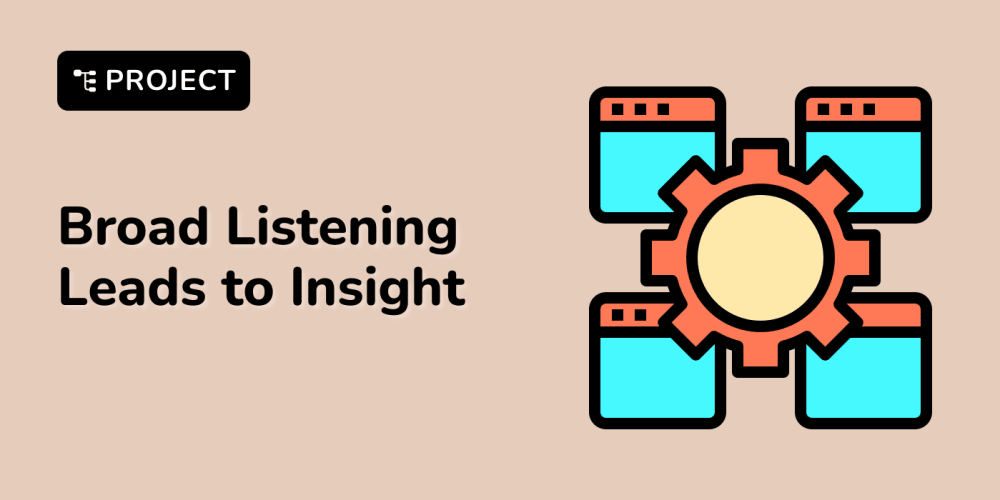The Full-Stack Components Customization Pyramid: Building Flexible and Scalable Applications
Introduction
In today's dynamic and ever-evolving digital landscape, software development faces a constant challenge: building applications that are not only functional but also adaptable, maintainable, and scalable. This is where the concept of the Full-Stack Components Customization Pyramid comes into play. This powerful framework empowers developers to create robust and extensible applications by breaking them down into reusable, customizable components that span the entire technology stack – from the front-end to the back-end.
This article will delve into the intricacies of the Full-Stack Components Customization Pyramid, exploring its key concepts, practical use cases, and the benefits it offers. We will also analyze the challenges associated with this approach and compare it with alternative development strategies.
1. Key Concepts, Techniques, and Tools
1.1 The Foundation: Components
At the heart of the Full-Stack Components Customization Pyramid lies the concept of components. Components are self-contained units of code that encapsulate specific functionalities and data. They can be simple UI elements like buttons and text inputs, or complex business logic modules responsible for data processing and API interactions. The key is that each component is independent and reusable, allowing developers to assemble and compose applications from a library of pre-built blocks.
1.2 The Levels of Customization
The Full-Stack Components Customization Pyramid introduces a hierarchical structure for managing component customization:
- Level 1: Core Components: These are the fundamental building blocks of your application, providing core functionalities and data structures. They are often written in a language like TypeScript or Python and offer a base level of functionality.
- Level 2: Feature Components: Built upon the core components, feature components implement specific business logic or user interface features. They leverage the core functionalities to provide unique value to the application.
- Level 3: Theme Components: These components handle the visual appearance and branding of the application. They allow for easy customization of themes, colors, fonts, and other visual elements.
- Level 4: Layout Components: Layout components define the structure and layout of the application's user interface. They provide a framework for organizing content and navigation elements.
- Level 5: Application Components: At the highest level, application components orchestrate the interaction between other components and manage overall application state. They provide a central point of control for the application's behavior.
1.3 Tools and Frameworks
Several tools and frameworks facilitate the implementation of the Full-Stack Components Customization Pyramid:
- Component Libraries: React, Vue.js, Angular, and Svelte provide powerful component-based frameworks for building front-end interfaces.
- Microfrontends: Architectures like Bit and Module Federation allow developers to split the application into smaller, independent front-end modules that can be developed and deployed independently.
- Backend Frameworks: Frameworks like Django, Flask, Express.js, and Spring Boot offer robust tools for building back-end services and APIs.
- API Gateways: Tools like Kong and Tyk enable the creation of centralized API gateways that manage access control, rate limiting, and security for APIs exposed by back-end components.
- Data Management Tools: Databases like PostgreSQL and MongoDB provide robust data storage solutions, while tools like GraphQL and REST APIs enable efficient data access and manipulation.
2. Practical Use Cases and Benefits
2.1 Real-World Applications
The Full-Stack Components Customization Pyramid finds its applications in various domains:
- E-commerce: Building modular shopping cart components, payment gateways, and product display modules.
- Social Media: Creating reusable profile components, comment sections, and feed elements.
- Content Management Systems: Developing customizable content blocks, page layouts, and user interface elements.
- Enterprise Software: Creating reusable business logic modules, data visualization components, and reporting dashboards.
2.2 Advantages of Using the Pyramid Approach
- Increased Reusability: Components can be reused across multiple projects, reducing development time and effort.
- Enhanced Maintainability: Individual components are easier to understand, debug, and update, leading to a more maintainable codebase.
- Improved Scalability: Applications built with components can be easily scaled up or down to meet changing demands.
- Faster Development Cycles: Developers can work on independent components simultaneously, accelerating the development process.
- Improved Collaboration: Teams can collaborate more effectively by working on specific components and integrating them seamlessly into the application.
- Customization Flexibility: Components can be easily customized to meet specific needs and requirements, allowing for greater flexibility.
- Simplified Deployment: Deploying components independently allows for faster and more frequent releases.
3. Step-by-Step Guide: Building a Simple E-commerce Component
Let's illustrate the concept of building a simple e-commerce component using React and Node.js:
3.1 Creating the Front-End Component (React)
// ProductCard.jsx
import React from 'react';
function ProductCard({ product }) {
return (
<div classname="product-card">
<img alt="{product.name}" src="{product.image}"/>
<h3>
{product.name}
</h3>
<p>
{product.price}
</p>
<button>
Add to Cart
</button>
</div>
);
}
export default ProductCard;
3.2 Creating the Back-End Component (Node.js)
// productService.js
const express = require('express');
const router = express.Router();
const products = require('./products.json'); // Data source
router.get('/', (req, res) => {
res.json(products);
});
router.get('/:id', (req, res) => {
const product = products.find((p) => p.id === req.params.id);
res.json(product);
});
module.exports = router;
3.3 Integrating Components
The React component (ProductCard.jsx) can be integrated into a main application component, fetching product data from the Node.js API:
// App.js
import React, { useState, useEffect } from 'react';
import ProductCard from './ProductCard';
function App() {
const [products, setProducts] = useState([]);
useEffect(() => {
fetch('http://localhost:3000/products')
.then((response) => response.json())
.then((data) => setProducts(data));
}, []);
return (
<div>
<h1>
Our Products
</h1>
<div classname="products">
{products.map((product) => (
<productcard key="{product.id}" product="{product}">
</productcard>
))}
</div>
</div>
);
}
export default App;
This example demonstrates how a simple product card component can be built and integrated with a back-end API to fetch and display product data. This approach can be extended to create more complex components for cart functionalities, order management, and other e-commerce features.
4. Challenges and Limitations
While the Full-Stack Components Customization Pyramid offers numerous benefits, it also presents some challenges:
- Complexity: Managing a large number of components can be challenging, requiring robust tooling and documentation.
- Component Isolation: Maintaining proper isolation between components to prevent unintended side effects can be difficult.
- Testing: Thorough testing of individual components and their interactions becomes essential to ensure application stability.
- Performance: The overhead associated with component communication and data exchange can impact application performance if not managed efficiently.
- Versioning and Dependency Management: Keeping track of component versions and dependencies across multiple projects can be complex.
5. Comparison with Alternatives
5.1 Monolithic Architecture:
Monolithic architectures build applications as a single, tightly coupled unit. While simpler to manage initially, monolithic applications can become difficult to maintain and scale as they grow in size and complexity.
5.2 Microservices:
Microservices decompose applications into smaller, independent services that communicate over well-defined APIs. While offering greater flexibility and scalability, microservices introduce increased complexity in terms of service discovery, communication, and deployment.
5.3 Serverless Computing:
Serverless computing allows developers to run code without managing servers, reducing operational overhead. However, serverless architectures can be more challenging to debug and monitor, and they may not be suitable for all applications.
6. Conclusion
The Full-Stack Components Customization Pyramid provides a powerful framework for building flexible, scalable, and maintainable applications. By breaking down applications into reusable, customizable components, developers can achieve faster development cycles, improved collaboration, and greater customization flexibility. While challenges exist, with proper planning and the right tools, the pyramid approach can be a valuable asset for any software development team.
7. Further Learning
To delve deeper into the Full-Stack Components Customization Pyramid, explore resources like:
- Component Libraries: React, Vue.js, Angular, Svelte
- Microfrontends: Bit, Module Federation
- Backend Frameworks: Django, Flask, Express.js, Spring Boot
- API Gateways: Kong, Tyk
- Data Management Tools: PostgreSQL, MongoDB, GraphQL, REST APIs
8. Call to Action
Consider adopting the Full-Stack Components Customization Pyramid for your next software development project. Explore the available tools and frameworks, and start building flexible and scalable applications that can adapt to future challenges.


















